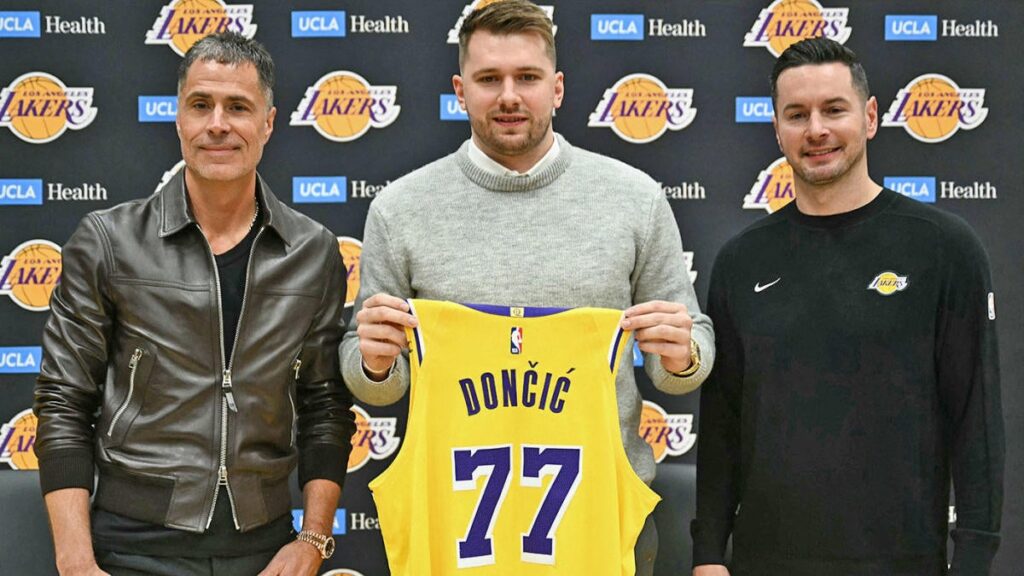Luka Doncic, a Laker. Anthony Davis to the Mavericks. Jimmy Butler’s a Warrior. Kevin Durant almost got moved. And so on — a nonstop flurry of trades, rumors, and recalibrations and oh-my-God-really moments that made this NBA trade deadline the most interesting in league history.
“That,” one executive wrote to CBS Sports after the deadline finally slammed shut Thursday, “was insane.”
It is also unlikely to be the pattern going forward, so best to have enjoyed the mania while it lasted.
That’s because the sense across the league is that, for a variety of reasons, future NBA trade deadlines won’t be as much fun as this one.
“No, I don’t think so,” one Eastern Conference general manager said when asked if this was the start of a pattern of trade deadline madness. “Many of these were more (about adjusting to moves from) the CBA from the last time. I don’t think there’s a huge change going on.”
In fact, many of the executives who were behind some of these deals over the last few days said their actions and those of their colleagues were less about a lasting change and more the product of several factors coalescing all at once:
- The rarity of having closing windows for two all-time greats like Steph Curry and LeBron James, fuel for those two teams to be particularly active.
- Nico Harrisons, as one put it, are in short supply.
- The learning curve for front offices about the impact and peculiarities of the new CBA will fade as time goes on.
That learning curve was clear on both ends of the spectrum, both for teams in second-apron hell and those, especially smaller markets, who have learned that building a winner with this CBA means having some long-term patience.
For the latter approach, several people mentioned Charlotte as a prime example of how this deadline saw players move out as such teams rethink their medium- and long-term plan.
Oklahoma City Thunder general manager Sam Presti clearly grasped what the new rules would mean for team building, the need for flexibility, and the value of a bevy of assets and team-friendly contracts for important players.
The aprons will also be the tails that wag the dog in the NBA, several executives said, and some of these high-profile moves — or those that nearly happened — were viewed as adjustments by front offices coming to grips with the dangers of spending too much and still struggling.
“The aggregation of salaries and other restrictions in the aprons is a game-changer,” a third executive said.
“No, not more big trades, I just think this CBA probably will push more three-team trades being norms, especially when doing apron trades,” the third executive added. “It used to be where, ‘If you had a three-team trade, you had no trade.’ But now you need them if there’s an apron team involved.”
“You will see teams try to dip into the second apron for only a year or two, and then try to get out,” the Eastern Conference GM said.
This deadline, then, was about several factors hitting at once.
Teams are likely to see their decision making with horror and mockery and be more careful going forward.
In fact, Phoenix’s decision to send out Jusuf Nurkic was about the chance to get under the second apron this summer.
The decision to part ways with Khris Middleton by the Milwaukee Bucks was driven by their need to stay under the salary cap, even though the acquisition of Kyle Kuzma did not have a significant impact on their performance. The trade involving Doncic and AD was largely criticized due to the poor return received by one of the league’s rising stars. Jimmy Butler’s move to the Miami Heat was influenced by the Golden State Warriors’ urgency to extend Steph Curry’s championship window. Furthermore, the trade that sent Fox to the Spurs and Lavine to the Kings was primarily a result of Fox’s agent adjusting to the new Collective Bargaining Agreement. While major trades will continue to shape the NBA landscape, the recent trade deadline was particularly hectic as teams navigate the implications of the new CBA. Executives are realizing that future trade deadlines may not be as eventful as this one. However, as demonstrated by the surprising Doncic-AD trade, anything can happen in the NBA.

